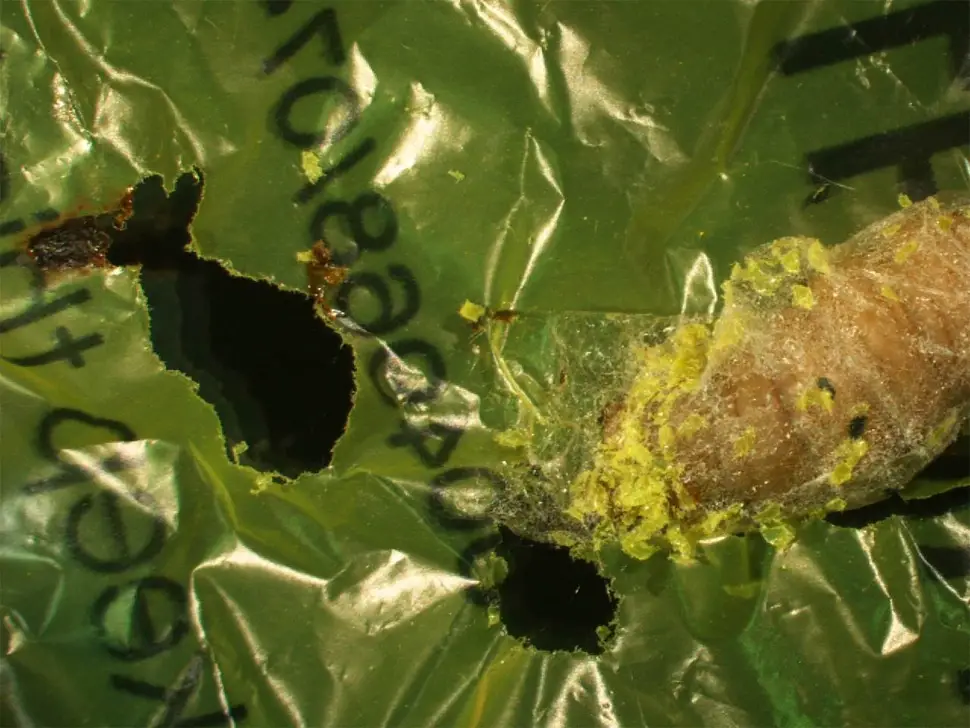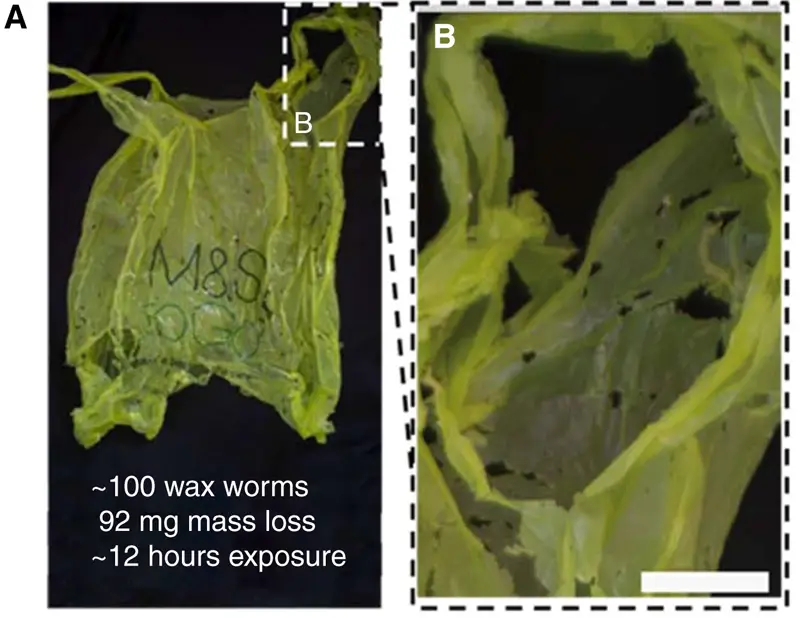
26th April 2017 Wax moth larvae: a solution to plastic waste? Wax moth larvae are reported to be able to biodegrade polyethylene, one of the toughest, most resilient, and most used plastics. The creatures may be a solution to the growing problem of plastic waste.
Generally speaking, plastic is incredibly resistant to breaking down. That's certainly true of the estimated 500 billion to 1 trillion polyethylene plastic bags that people use each and every year. But scientists reporting in the journal Current Biology this week may have found one potential solution to this growing problem. The key is a caterpillar commonly known as the wax worm. "We have found that the larva of a common insect, Galleria mellonella, is able to biodegrade one of the toughest, most resilient, and most used plastics: polyethylene," says Federica Bertocchini, of the Institute of Biomedicine and Biotechnology of Cantabria in Spain. A previous study had shown that Plodia interpunctella wax worms, the larvae of dian mealmoths, can also digest plastic. Bertocchini and her colleagues made the discovery by accident, after noticing that plastic bags containing wax worms quickly became riddled with holes. Subsequent research found that the worms can do damage to a plastic bag in less than an hour. After 12 hours, all that munching of plastic leads to an obvious reduction in plastic mass. The researchers showed that the wax worms were not only ingesting the plastic, they were also chemically transforming the polyethylene into ethylene glycol. This is suspected to be the case in Plodia interpunctella as well.
Although wax worms don't normally eat plastic, the researchers suspect that this ability is a by-product of their natural habits. Wax moths lay their eggs inside beehives. The worms hatch and grow on beeswax, which is composed of a highly diverse mixture of lipid compounds. The researchers say the molecular details of wax biodegradation require further investigation, but it's likely that digesting beeswax and polyethylene involves breaking down similar types of chemical bonds. "Wax is a polymer – a sort of 'natural plastic' – and has a chemical structure not dissimilar to polyethylene," explains Bertocchini. As the molecular details of the process become known, the researchers say it could be used to devise a bio-technological solution to managing polyethylene waste. They will continue to explore the process in search of such a strategy. "We are planning to implement this finding into a viable way to get rid of plastic waste, working towards a solution to save our oceans, rivers, and all the environment from the unavoidable consequences of plastic accumulation," Bertocchini says. "However," she adds, "we should not feel justified to dump polyethylene deliberately in our environment just because we now know how to bio-degrade it." ---
Comments »
|








